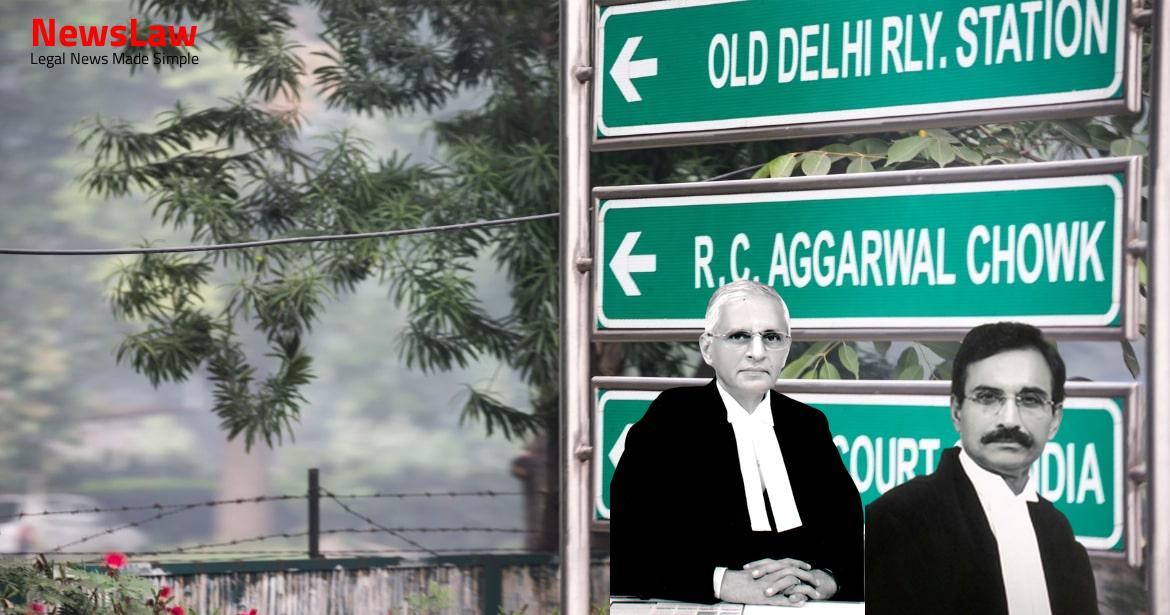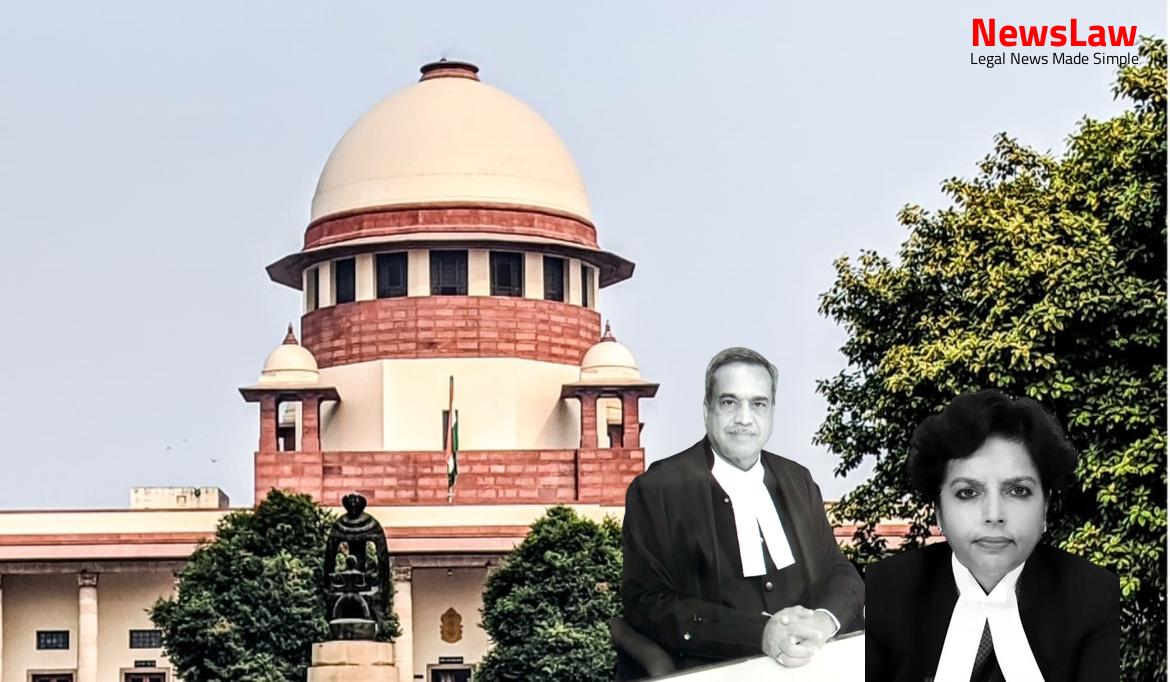Explore the legal nuances surrounding restoration rights in a complex land dispute case where continuous possession played a pivotal role. The court’s in-depth analysis and interpretation of relevant rules and procedures led to a significant decision benefiting the respondent. Discover how the court’s thorough legal assessment influenced the ultimate resolution of the case.
Facts
- The intra-court appeal was filed by the appellants against the order dated 13.09.2017 passed by the Single Judge of the High Court of Karnataka in W.P. No.46003/2013 (KLR-RES).
- The Division Bench, through the judgment dated 17.07.2019, dismissed the appeal filed by the appellants in Writ Appeal No. 2319 of 2018.
- The appellants had challenged the order passed by the Single Judge in the intra-court appeal, which was subsequently dismissed by the Division Bench.
- The respondent claimed uninterrupted possession of the property which was forfeited in 1892 due to non-payment of land revenue.
- The respondent filed applications for restoration in 2000, which were not considered prompting a writ petition in 2007.
- Despite the land being transferred to the Forest Department in 1994, the respondent continued possession and cultivation.
- Various legal battles ensued, with the respondent filing writ petitions demanding restoration of the property.
- The Single Judge initially directed reconsideration of the applications, but subsequent rejections led to more petitions and appeals.
- Ultimately, the Court allowed the writ petition, directing restoration of the forfeited property to the respondent.
- The judgment was based on the amended Rule 119 of the Karnataka Land Revenue Rules allowing restoration if applied within a specified time frame.
- The Court emphasized the continuous possession and existence of structures belonging to the respondent on the disputed land.
Also Read: Supreme Court Upholds Rejection of Plaint Under Order VII Rule 11 of CPC: A Critical Analysis
Issue
- Whether the respondent has the right to seek restoration
- Analysis of whether such a right is available to the respondent
- Clarification on whether the right to seek restoration subsisted in favor of the respondent
Also Read: Validity of Debt and Enforcement of Section 138 NI Act
Arguments
- The property in question was being cultivated as a plantation.
- The forfeiture of the property had taken place by operation of law due to non-payment of land revenue arrears.
- The ancestors of the respondent had continued to possess the property even after forfeiture, and the appellant has succeeded to this possession.
- The lands were not in the possession of the respondent when they were forfeited to the government and transferred to the Forest Department.
- The property in question was originally privately owned and was purchased by the ancestors of the respondent in an auction.
Also Read: Enlargement on Bail in Illegal Mining Case
Analysis
- The property was transferred from the Revenue Department to the Forest Department of the same government.
- The order specified that the land should continue as ‘C’ and ‘D’ category lands, not as a reserved forest.
- The Forest Department’s intervention was deemed impermissible in this context.
- The possession of the land by the respondent was established through reports submitted by the Tehsildar and the Assistant Commissioner.
- The High Court granted relief to the respondent based on the possession held.
- The property was part of a larger extent transferred to the Forest Department for a limited purpose, not disposal.
- The respondent had the right to seek restoration by meeting the criteria set forth in the rules.
- The property remained forfeited unless restored, and the Forest Department’s claim was subject to the restoration process.
- The respondent’s possession and right to restoration were the key considerations in the legal proceedings.
- The respondent had availed the benefit of an amendment to the relevant rule for restoration.
- The necessary criteria for restoration as per the authority were met by the petitioner.
- The government order transferring the land did not amount to disposal but was for a specific purpose.
- The possession of the land by the petitioner was crucial for the restoration process.
- The first respondent government’s lack of action on canceling the diversion order affected the second respondent’s decision-making.
- The Deputy Commissioner had a directive to dispose of the application within a timeframe, leading to his decision-making process.
- The Deputy Commissioner has the authority to restore any forfeited occupancy or alienated holding purchased by the Government within three years of forfeiture.
- The restoration can be done on payment of the arrears, land revenue, and expenses incurred in recovery and further proceedings.
- The right to seek restoration is specified in sub-rule (2) of Rule 119 of Rules 1966, as amended in 2001.
- The Deputy Commissioner can restore forfeited holdings even after the specified period under certain conditions.
- Restoration can be made to individuals who have not been dispossessed of the occupancy or holding immediately before the amendment of the rules.
- The payment of arrears and expenses is a prerequisite for restoration of the forfeited occupancy or holding.
- A factual finding has been made that possession of the property remained with the respondent throughout.
- This satisfies the requirement to claim restoration under sub-rule (2) to Rule 119 of Rules 1966.
Decision
- The appeal has been dismissed as it was found to be devoid of merit.
- No order has been given regarding the costs of the appeal.
- Any pending applications have been disposed of.
Case Title: THE STATE OF KARNATAKA Vs. G. RAMANARAYANA JOSHI (2022 INSC 581)
Case Number: C.A. No.-004117-004117 / 2022



